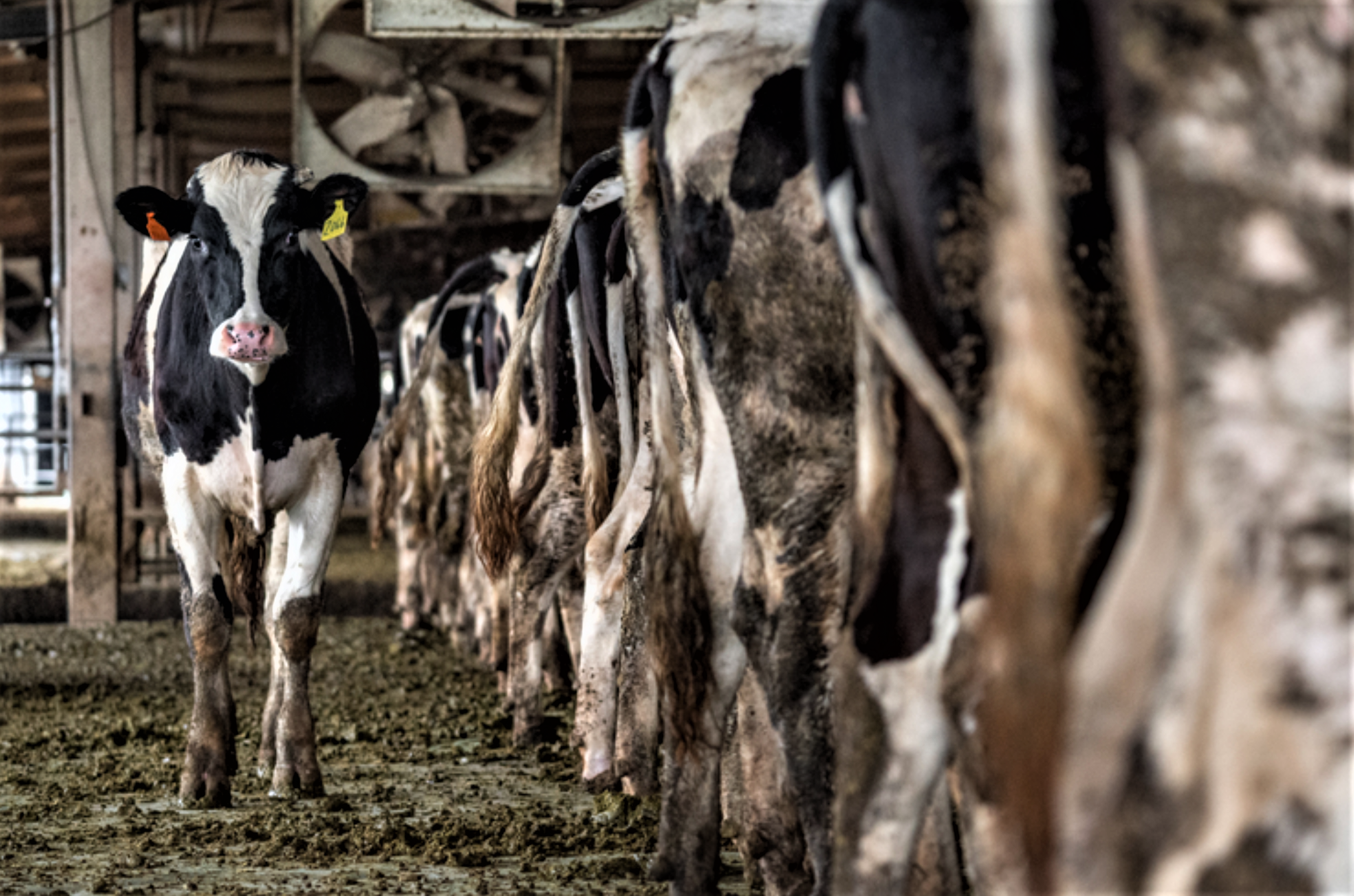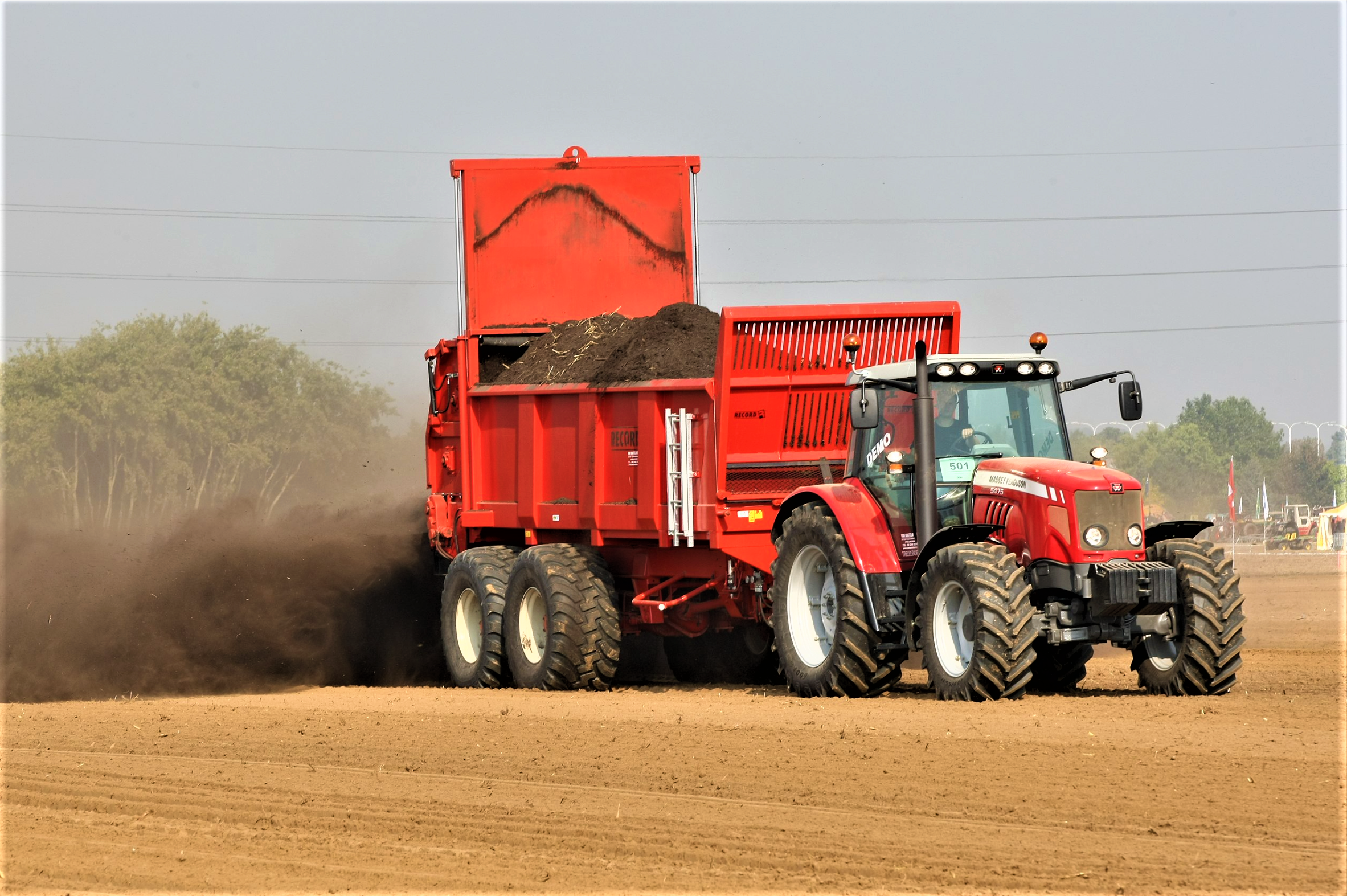Animals
Bridges to Safety
Why did the chicken — or anyone else for that matter — cross the road? We know the answer but the key is to get across safely! San Antonio recently opened the US’s largest wildlife bridge across a six-lane expressway to achieve just that. Stocked with native plants and grasses, the 165-foot-wide bridge is being used by coyotes, deer and raccoons to get safely to the other side. The first wildlife bridges originated in Europe in the 1950s and they’ve grown in popularity since. They’re highly effective in helping animals wander and migrate safely. Sweden is building bridges over roads and railways to protect their reindeer. Wyoming created two such bridges in 2012 and saw an 81 percent decrease in collisions between wildlife and cars. And Los Angeles is planning one that will span a 10-lane highway and be the largest wildlife bridge in the world.
Food
How We Cook Matters
A new study estimates the GHG emissions of different cooking methods, and shows which ones impact the climate less.
1. Ovens generally produce the most cooking emissions due to their comparatively high energy demand and long cooking times. Microwaves typically produce the least. The authors suggest precooking foods in microwaves to reduce time in the oven.
2. Using a microwave to reheat, defrost and prepare vegetables, fruits, eggs and fish, gives the same result as boiling or steaming on the stovetop but with lower emissions.
3. Electric grills use less energy than oven grills or toasting.
4. Electric pressure cookers substantially reduce cooking times and emissions.
5. Slow cookers achieve low emissions even with long cooking times.
the Climate Crisis
The Media Steps Up
Colorado University’s Media and Climate Change Observatory’s latest report, says 2020 saw the world’s second-most climate change and global warming coverage in the observatory’s 17-year history. And the amount of climate coverage reached new highs in Canada and the UK. The report cited Covering Climate Now (CCNow), the global media collaboration dedicated to raising the profile of the climate crisis (in which Planet Friendly News is a partner), as a driver of the coverage.
Also, in its year-end report, Media Matters for America cited CCNow’s work as one of 2020’s climate journalism highlights, calling our collaboration “one of the most successful climate projects in recent years, boosting the reach of quality climate and environmental justice stories.” Read Media Matters’s report.
words of wisdom
“We know nature is under siege and we know we are responsible — we don’t really need to have a lot more data to start changing what we do. It’s unconscionable what could happen if we don’t start paying attention and change our way of consumption.”
— Prof. David Wagner, University of Connecticut, USA.
“The entire cause of the catastrophic collapse of wildlife populations, which are less than a third of what they were 50 years ago, globally, is the use of animals as a food technology.”
— Patrick Brown, Founder and CEO, Impossible Foods.
Photo: Ossi Saarinen www.instagram.com/soosseli
on the horizon
Photo: Pexels on Pixabay.
Cool Food For a Greener Planet
More people want to help fight the climate crisis by choosing food with a lower carbon footprint. But how?
One answer is Cool Food Meals a certification program for dining facilities that makes it easy for consumers to choose meals that are more climate friendly. The Cool Food Pledge has been signed by organizations that serve almost a billion meals a year, and includes universities, hospitals, businesses, cities and restaurants. The goal of the program, led by the World Resources Institute and backed by the UN Environment Program, EAT Forum and the Sustainable Restaurant Association, is to cut food-related GHG emissions by 25% by 2030. Organizations ranging from Harvard University and IKEA to the cities of Copenhagen and Toronto are on board.
“A quarter of greenhouse gas emissions are from agriculture and related deforestation. With the new Cool Food Meals certification, consumers will know if their food choices are helping the climate,” said Andrew Steer, President and CEO, World Resources Institute. “The good news is that today we have more choices that can help us reduce our impact on natural resources and the climate while still enjoying tasty food.”
Animal-based foods account for two-thirds of agriculture-related greenhouse gas emissions, making shifting diets toward less resource-intensive foods like legumes and vegetables an important priority. It’s an issue that consumers are starting to tap into, with one recent report finding that 6 in 10 Americans say it’s important to them that the food they consume is sustainable. In another report, half of those surveyed said they would be willing to choose more sustainable, plant-based foods if they had more information about their environmental impact.
Enjoying more plant-based foods is an important way to reduce pressure on the climate — take beef versus beans for example. Per gram of protein, producing beef uses 20x the land and emits 20x the greenhouse gases compared with producing beans.
Panera Bread, with 2,000 restaurants in the US and Canada, has earned the Cool Food Meals certification on 53% of its menu items. The decal badge next to menu items makes it easy for customers to identify planet friendly meals.
Calculating the carbon footprint of food can be fiendishly difficult, involving researching and documenting multiple impacts across complex supply chains for items such as fertilizers, livestock digestion and manures that emit gases, land conversion that releases carbon dioxide into the atmosphere, as well as transportation, packaging and food processing.
Using a dish’s ingredients list, WRI calculates a dish’s carbon footprint by analyzing the emissions from the agricultural supply chains and the land used to produce the meal. If a dish’s carbon footprint falls below an established per-meal threshold and meets a nutrition safeguard, it is approved as a Cool Food Meal. The per-meal threshold is based on a maximum recommended daily carbon footprint for a person’s diet, which is 38% smaller than the current average.
The deeper dive
Photo: Jo-Anne McArthur/We Animals.
The Role of Animal Agriculture in Air Pollution
A drive through the countryside can be rudely interrupted by the smell of freshly-spread manure. Even so, most of us are unaware of the contribution of animal agriculture to deadly air pollution.
According to the World Health Organization, after tobacco smoking, air pollution is the second biggest environmental risk for non-communicable diseases globally. The WHO says that ambient air pollution accounts for an estimated 4.2 million deaths per year due to stroke, heart disease, lung cancer and chronic respiratory diseases. An astonishing 91% of the world’s population live in places where air quality does not meet WHO standards.
The main reason that air pollution endangers health is that we breathe in particulate matter (PM) – respirable particles composed of sulphate, nitrates, ammonia, sodium chloride, black carbon, mineral dust and water. Particles with a diameter of less than 10 microns (PM10) pose the greatest risks, as they can penetrate peoples’ lungs and enter the bloodstream.
While large concentrations of particulate matter are typically emitted by sources such as diesel vehicles and coal-fired power plants, agriculture is a major and under appreciated contributor too. The culprit is ammonia formed from both livestock and fertilizer which helps produce smog.
A new study in the journal Ambio of public attitudes in Europe shows a huge disconnect between common beliefs and the true causes of air pollution as well as little knowledge of the contribution of agriculture. The research polled more than 16,000 people from both urban and rural areas across seven EU countries including Austria, Germany, Italy and the UK.
“Our study shows a dramatic underestimation of the contribution of the agri-food sector to air pollution,” the researchers said.
The charts below show, first, what people believe causes air pollution (industry and transportation are the favourite choices) and second, what actually causes air pollution in these countries.
Source: Maione, M. et al. Ambio: A Journal of Environment and Society.
The top source of particle air pollution in five of the seven countries is agriculture. Industry and transportation are major sources of air pollution in other parts of the world but contribute much less to smog in the EU because of strict regulations that limit these types of emissions. According to the European Environment Agency, air pollution is directly connected to ammonia emissions from agriculture. In 2016, the EU-28 agricultural sector was the source of 92% of total ammonia emissions across the region.
A second study done for the UK’s Department of Environment, Food and Rural Affairs (DEFRA), found that the main contribution to air pollution from agriculture in the UK is emissions of ammonia (NH3), the majority from livestock farming, with cattle providing 49% of the annual total.
“The main impacts of ammonia arise through its contribution to the formation of particulate matter and the consequent effects on human mortality and morbidity throughout the UK,” the study said.
Why the disconnect in public knowledge of the issue? The researchers say it may be partly due to “a stereotype of the countryside as a good place to live and/or as a repository of values, with the typical binaries in people’s minds being … rural = clean/urban = dirty.”
Photo: Manure spreader, Wikimedia Commons CC 2.0.
So, what can be done to reduce the contribution of agriculture to air pollution? The DEFRA study shows that in the Netherlands and Denmark, reductions in NH3 emissions were achieved through strict national regulations that focused primarily on manure management, including land application of manure, manure storage and animal housing.
In the Netherlands, this included a ban on free surface spreading of liquid manure, requirements for covered manure storage and air cleaning systems for farm buildings housing animals to improve air quality and reduce odours. This led to a 50% reduction in ammonia emissions between 1993 and 2014. Other potential measures include low emission mineral fertilizers and injecting manure into the ground, the latter found to reduce ammonia emissions by 70%.
The DEFRA study cites 2017 research showing that reducing agricultural emissions by 50% could reduce the annual mortality attributed to PM2.5 by 250,000 globally and by 52,000 across Europe. And a 2014 study shows that improving agricultural and livestock sector practices and/or reducing meat consumption could contribute significantly to air quality mitigation efforts.
new ban on live exports
The UK government has unveiled plans for England and Wales to become the first countries in Europe to ban the export of live animals for slaughter and fattening. These animals typically endure long journeys causing injury and distress, and sometimes death. The decision follows decades of campaigning by animal protection organizations, and is an important step towards banning this cruel practice altogether. Unfortunately, poultry exports (tens of millions of chicks annually) are excluded from the ban.
Photo: Jo-Anne McArthur, Eyes On Animals.
Good news
Billions of male chicks are destroyed globally every year as they have no value to the poultry industry. Photo: Jo-Anne McArthur/Animal Equality.
Germany became the latest country to ban the mass culling of male chicks after its government approved a draft law to end the practice from 2022. Considered worthless by the egg and poultry industries – as they don’t produce eggs and aren’t bred for meat – male chicks are shredded or gassed soon after hatching. Forty-five million chicks are destroyed in Germany every year.
Animal welfare activists have long campaigned to end the practice but farmers complain there are no practical, affordable and cruelty-free alternatives.
However, the government says there are methods available to farmers to determine the sex of chicks before they hatch. One technique, developed by a German firm, involves using a laser to make a tiny hole to extract liquid from a fertilized egg, and test it for the presence of a female hormone.
Our growing population will need more food which — in a “business-as-usual” scenario until 2050 — will require 26% more farmland globally and further reduce wild habitat. Diets and farming have the power to harm or protect biodiversity and a new Nature Sustainability study says that almost 90% of nearly 20,000 species will lose habitat to farming over the next 30 years.
However, the researchers say “If we make ambitious changes to the food system, then we can prevent almost all these habitat losses.” Healthier and more sustainable diets would reduce land use, encourage greater biodiversity and limit habitat loss to only 1%. The changes would include: transitioning to healthier, plant-based diets, halving food loss and waste, and better land use planning.
In wealthy nations, dietary shifts away from meat and dairy towards more plant-based foods would be one of the most effective ways to limit the expansion of cropland for animal feed and livestock pasture — both of which destroy wild habitat.
Targeted wetland restoration in heavily farmed areas would dramatically reduce the amount of nitrogen polluting rivers, lakes and coastal areas, a new study finds.
Researchers at the The Water Institute at the University of Waterloo and the University of Illinois Chicago, examined nitrogen loads from fertilizer on US farms and discovered that prioritizing wetland restoration close to heavily farmed areas would remove up to 40x more nitrogen than the current ad hoc approach.
Nitrogen enters rivers in runoff from agricultural lands and is carried on to lakes and oceans, where it feeds algae growth, reduces oxygen levels, limits biodiversity and causes significant economic harm. “Wetlands are critical ecosystems, but they are often greatly undervalued and overlooked,” said Waterloo researcher Frederick Cheng and co-leader of the study published in the journal Nature.
“Without them, environmental problems such as algal blooms, fish kills and coastal hypoxia would be much worse.” Armed with these findings, policy makers, conservation authorities and the agricultural industry can make targeted wetland restoration a priority.
As environmental, health, and animal welfare concerns prompt consumers to replace meat with plant-based products, two more businesses are stepping up to make plant-based eating even easier.
Canadian-based, Vejii is launching No Evil Foods plant protein products on its US-based, e-commerce marketplace at ShopVejii.com.
Based in Ashville, NC, No Evil Foods is the first plastic-negative plant-based meat brand. Its products are wrapped in 100% compostable and recyclable materials and are low in fat, high in protein, and free from cholesterol, nitrates, and antibiotics.
Vejii is building the world’s largest vegan marketplace to make vegan shopping easy. Currently, it is home to over 3,000 vegan SKU's including grocery, skincare, pet products, and homecare.
data points
Photo: Steve W from Pexels.
25 million tonnes of animal-by-products (ABPs) from slaughterhouses are rendered every year in the US alone. ABPs are a key component in pet food and are an important contributor to the significant carbon footprint of the $90 billion global pet food industry. For more info, see our recent blog on the Carbon Pawprint of Pet Food.
85 percent of Brits want an ‘urgent’ ban on factory farming amid pandemic fears, according to a new poll of 2,000 adults commissioned by vegan charity, Viva! Also, 31 percent are planning ‘to slash their meat consumption or go vegan in 2021 amid COVID-19 concerns’.
In a statement sent to Plant Based News, Viva! Director Juliet Gellatley said: “Experts agree that factory farming is one of the leading causes of the mutation and spread of killer viruses between animals and humans ... It’s time to end factory farming before it ends us.”
In a survey from Faunalytics, 49% of Chinese respondents reported they intend to reduce their meat consumption suggesting that at least among the younger, urban Chinese population, animal product consumption may change significantly because of COVID-19.
charting our path
Meat Consumption By the Numbers
While Americans eat the most meat per capita, new research shows that young Americans are less likely to eat meat and most likely to choose plant-based menu options. Overall meat consumption is declining, even according to the meat-eaters in a new YouGov poll (below). 17% say they will eat less meat in the next 12 months, 66% of them say it’s because they want to be healthier. Boston Consulting Group says that meat consumption in the US is expected to decline until 2025 as a result of the pandemic.
For those who want to eat less meat, there are lots of tasty plant-based options. 33% of adults say they have tried a plant-based burger. 72% of them say it tasted pretty good, rating the flavour 7 or higher on a scale of one to 10. The beef burger is still ahead, rating 8 out of 10, but it’s close. Consumer tastes are changing and plant-based foods options are catching up quickly.
Chart: Planetary Health Diet, eatforum.org














